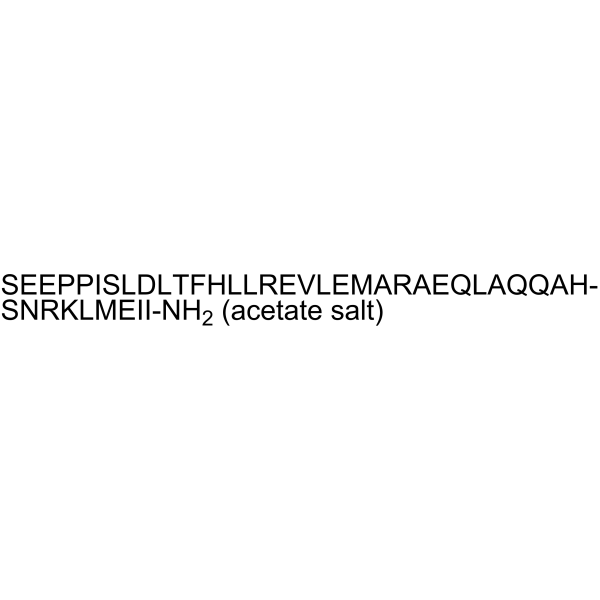All AbMole products are for research use only, cannot be used for human consumption.

For this product's availability, delivery time and price, please email [email protected] directly or click the "Inquiry Now" button below.
Corticotropin-releasing factor human acetate (Human CRF acetate) stimulates the synthesis and secretion of adrenocorticotropin in the anterior pituitary.
| Molecular Weight | 4817.5 |
| Solubility (25°C) | Water |
| Storage | -20°C, protect from light, sealed |
| Related CRFR Products |
|---|
| DMP 696
DMP 696 is a selective corticotropin-releasing hormone receptor 1 (CRHR1) antagonist, used for the treatment of anxiety and depression. |
| Antalarmin
Antalarmin is a selective nonpeptide corticotropin-releasing factor receptor 1 (CRHR1) antagonist with a Ki of 2.7 nM. |
| Antisauvagine-30
Antisauvagine-30 (aSvg-30) is a potent, competitive and selective CRF2 receptor antagonist with Kd values of 1.4 nM and 153.6 nM for mouse CRF2β and rat CRF1 receptors, respectively. |
| NBI-27914 hydrochloride
NBI-27914 (hydrochloride) is a selective Corticotropin-Releasing Factor 1 (CRF1) receptor antagonist with a Ki value of 1.7 nM. |
| K41498 TFA
K41498 TFA is an antisauvagine-30 (aSvg-30) analog and a strongly selective CRF2 receptor antagonist with Ki values of 0.66 nM, 0.62 nM, and 425 nM for human CRF2α, CRF2β, and CRF1 receptors, respectively.K41498 TFA inhibits sauvagine-stimulated cAMP accumulation in hCRF2α/hCRF2β expressing cells. K41498 TFA can be used in hypotension studies. |
All AbMole products are for research use only, cannot be used for human consumption or veterinary use. We do not provide products or services to individuals. Please comply with the intended use and do not use AbMole products for any other purpose.


Products are for research use only. Not for human use. We do not sell to patients.
© Copyright 2010-2024 AbMole BioScience. All Rights Reserved.
